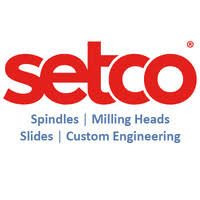
CINCINNATI, OH – Setco is pleased to announce the opening of its fifth North American Service Center in Ramos Arizpe, Coahuila, Mexico.
This newest Setco Service Center will offer a variety of solutions for spindle, slide, and milling head repair and rebuild services, including spindle removal and install, vibration analysis, and upgrades. Services are geared toward the automotive and aerospace industries that thrive in the Nuevo León, El Bajío and Chihuahua regions.
Setco is capable of repairing and rebuilding over 350 brands of spindles, and of virtually any type, with particular experience in Weiss, NTC, Kessler, GROB, and OKK spindles.
“We are excited to offer this new, enhanced level of support for Mexico” says Mr. Jeff Clark, President of Setco. “Having a physical presence in Ramos Arizpe will speed up our repair turnaround time for our partners and customers in Mexico. We are confident that Setco’s attention to quality, and our 107 years of designing spindles, will benefit and support the manufacturing base in these regions to assist in the local economic growth. With five Service Centers in North America, we’re becoming a ‘local repair shop’ to customers across the continent.”
Headed by Mr. Héctor Torres, Setco’s Regional Service Engineer, the facility officially opened on February 20, 2019.
Contact Details
Related Glossary Terms
- centers
centers
Cone-shaped pins that support a workpiece by one or two ends during machining. The centers fit into holes drilled in the workpiece ends. Centers that turn with the workpiece are called “live” centers; those that do not are called “dead” centers.
- gang cutting ( milling)
gang cutting ( milling)
Machining with several cutters mounted on a single arbor, generally for simultaneous cutting.
- milling
milling
Machining operation in which metal or other material is removed by applying power to a rotating cutter. In vertical milling, the cutting tool is mounted vertically on the spindle. In horizontal milling, the cutting tool is mounted horizontally, either directly on the spindle or on an arbor. Horizontal milling is further broken down into conventional milling, where the cutter rotates opposite the direction of feed, or “up” into the workpiece; and climb milling, where the cutter rotates in the direction of feed, or “down” into the workpiece. Milling operations include plane or surface milling, endmilling, facemilling, angle milling, form milling and profiling.






